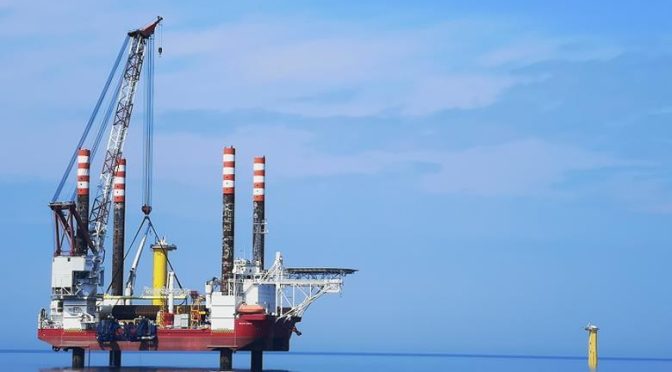Seajacks International recently completed the installation of all 33 wind turbines at the Akita and Noshiro offshore wind farm situated off Japan’s Akita Prefecture coastline – a major step forward for the country’s renewable energy market.
Eneti’s wholly-owned subsidiary mobilized the Seajacks Zaratan self-propelled vessel to execute the installations, in collaboration with main installation contractor Kajima and turbine supplier Vestas Japan.
The 140 MW project, owned by Akita Offshore Wind (AOW), is the first commercial-scale fixed-bottom wind farm to be built in Japan.
Blair Ainslie, CEO of Seajacks, said: “The completion of the turbine installation at Akita and Noshiro is an achievement that all parties involved can be proud of. The project is a powerful demonstration of a successful collaboration between international partners to achieve a successful project outcome.”
Seajacks Zaratan will continue to provide support on the project until the end of the charter period, before demobilizing and heading for more turbine installation projects in the Asia Pacific region.
During construction, transportation engineering specialist Mammoet was called in to dump 33 monopiles from the deck of the installation vessel. He said this was the first time that self-propelled modular transporters (SPMTs) had been used for this type of operation in Japan.
The operation took place approximately 1 km offshore between the ports of Akita and Noshiro, with the main marshalling station at Akita. The monopiles were to be turned over one by one from their horizontal orientation on the platform. In particular, tight tolerance control was required to ensure that the SPMTs were not subjected to high levels of torsional loading.
The monopiles were loaded by a crane onto a cradle and the frame overturned. The SPMTs were attached to the dump frame and the crane hook to its other end. The SPMTs were then driven forward as the crane was hoisted.
As each monopile was larger than the deck of the vessel, there was a need for the upending operation to stop and have the crane slew 180 degrees. Mammoet explained that an unusual steering technique allowed the trailers to be put into carousel mode; freewheeling to follow the motion of the crane. “This required some bespoke power pack design due to the limited available space on the jack-up vessel deck,” said Francisco Rodrigues, global segment lead for offshore wind for Mammoet.
Mammoet is hopeful of further business on the Akita Noshiro project and others beyond the monopile placement. “We do have ongoing discussions with local partners for future works,” said Rodrigues. “We are developing studies for multiple engineering, procurement, and construction companies in their wind developments. We are [also] assessing port infrastructures across the country and assisting local companies to develop their construction strategy for future tenders.”
Further information on this project, and on the development of the Japanese energy industry, can be found in our September/October 2022 edition.
Energy security has always been an important issue in Japan, with recent geological, meteorological, and geopolitical events bringing matters to even greater urgency.
Just this year Tokyo indicated that it would restart as many as four nuclear reactors, in addition to the five already operating. If such plans are completed, nuclear power would account for about 10 percent of the nation’s electricity. That would be well below the peak of 25 percent the year before Fukushima, and well above the 1 percent four years after the disaster.
Beyond the resurgence in nuclear power, almost a dozen thermal power plants are being considered for reactivation, expansion, or construction, including the possibility of a new coal-fired generator.
David Kershaw, heavyliftpfi.com


